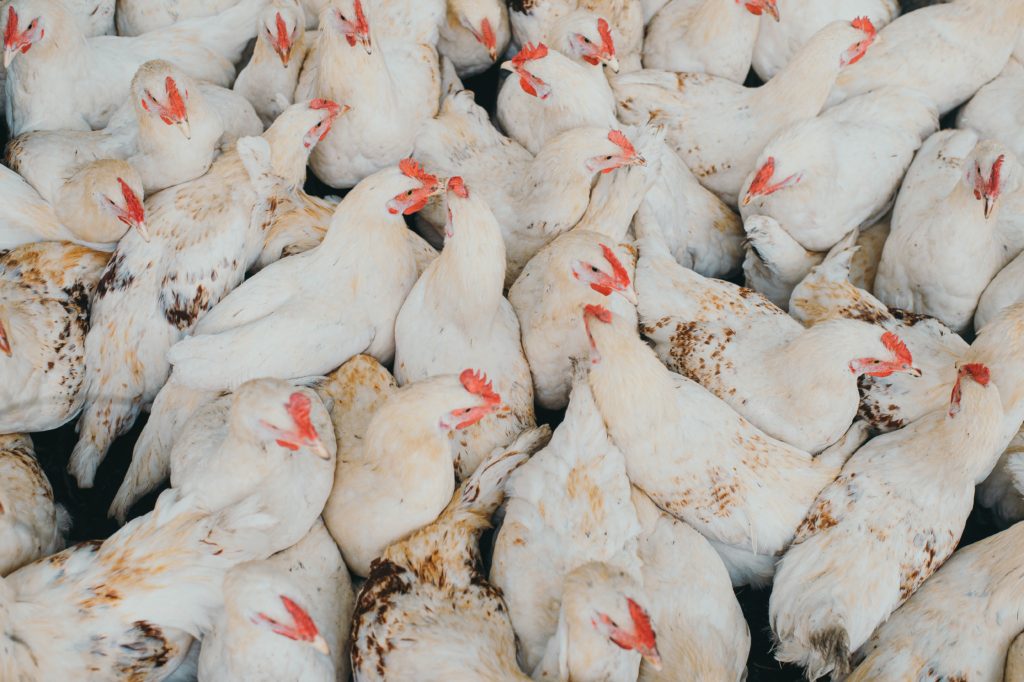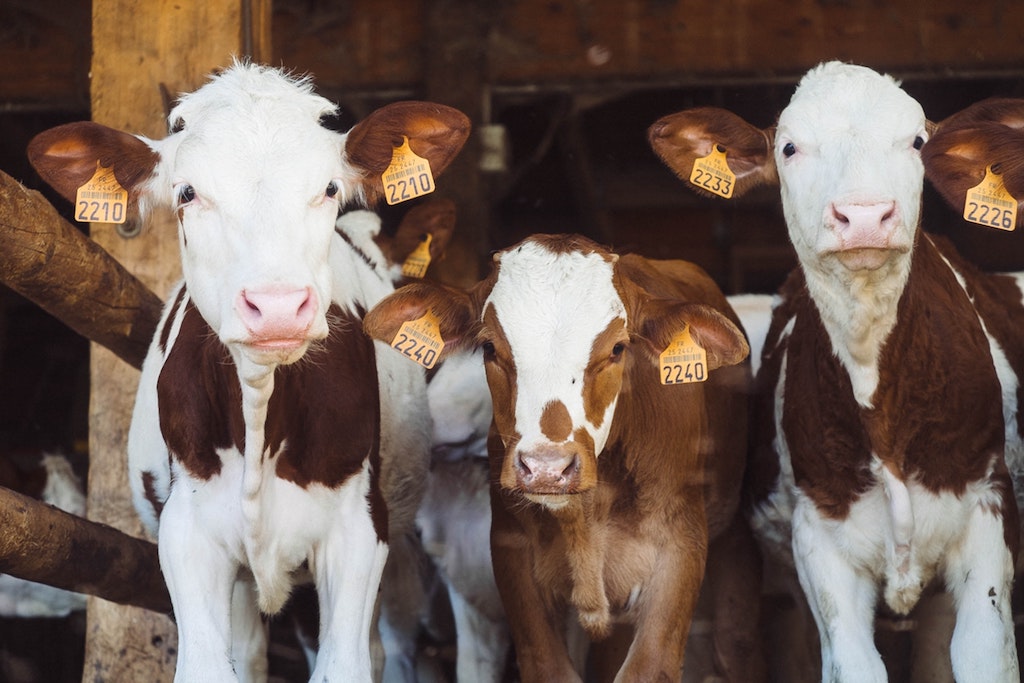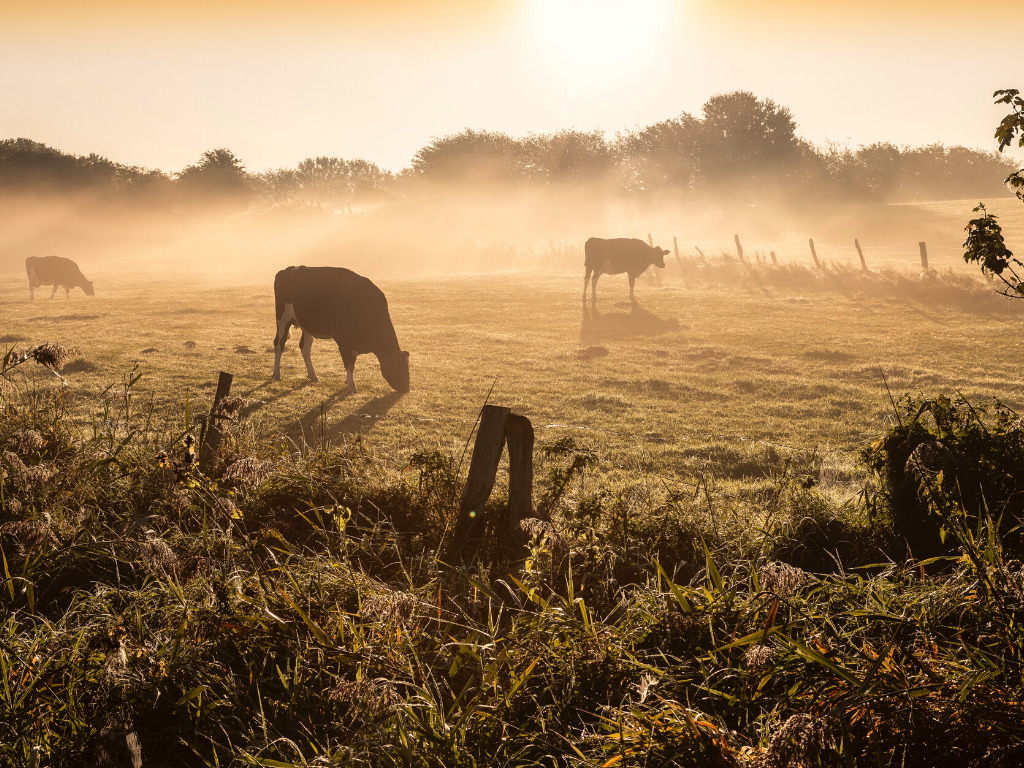Climate Change Is Coming for Big Meat in a Big Way, New FAIRR Report Finds
4 Mins Read
A new analysis by FAIRR’s Climate Risk Tool has found that half of the world’s largest livestock firms may be at risk of operating losses by 2030 due to climate-related cost increases.
According to the new FAIRR report, 20 of the 40 biggest livestock producers could see their profits wiped out, with North America the hardest hit with companies in the region expected to see profit margins fall by 11 percent, on average. The model was created in partnership with IPCC scientists.
The findings
The Climate Risk Tool projected losses of $23.7 billion in EBIT in 2030 compared to 2020 levels were calculated using FAIRR’s 2°C ‘Business as Usual’ scenario, which models climate impacts in line with a 2°C global temperature rise by 2100.
Jeremy Coller, Chair of the $70 trillion FAIRR investor network, said in a statement that the allure of investing in meat and dairy “could be approaching expiration” unless companies take action to address climate change. Companies at risk include global meat leaders JBS, Tyson Foods, and WH Group (owner of Smithfield). The model shows Brazilian beef supplier JBS take a $5 billion hit in losses, and Chinese pork producer WH Group’s profits would drop by $2.5 billion.

According to the model, all would be operating at a loss. The largest egg producer in the US, Cal-Maine, would also see a 15 percent cost increase from rising feed prices in 2030 – contributing to a $354 million profit loss. That model does not take into account the impact of external factors such as the bird flu, which has already led to the deaths of nearly 60 million birds in the US alone, and millions of dollars in losses.
“These figures highlight the urgent need for meat companies to adapt swiftly, or pay the financial price with investors increasingly not willing to bear the financial risk of investing in these companies,” Coller said.
“To mitigate the clear risk to the bottom line, companies should take a scientific approach and explore the best available strategies, including diversifying products and portfolios towards plant-based alternatives.”
The climate-related costs forecast include an expected carbon tax and a surge in feed prices caused by climate change-related impacts on agricultural production. On average, the cost increases are forecast to rise by more than nine percent with feed prices accounting for five percent of the cost rise and expected carbon taxes accounting for four percent.
The model factored in the potential of companies to offset the cost increases through climate mitigation strategies, but the report found that just six of the 40 companies had carried out a climate scenario analysis and only 11 of the 40 disclosed how they plan to mitigate the risks from rising feed costs through either data tracking, sourcing diversification, or substituting alternative feed ingredients.
Climate disclosure
FAIRR’s latest report called on companies to disclose information on climate scenario analysis and to develop more robust climate mitigation and adaptation strategies. The report also urged companies to focus on diversifying their product ranges and developing plant-based alternatives to mitigate the impact of climate risks on their businesses.
“This climate risk model represents a significant step forward in modelling the economic costs of a warming world on livestock producers,” said Philip Thornton, International Livestock Research Institute Emeritus Fellow, and Working Group II Lead Author for the IPCC’s Sixth Assessment Report.

“As set out in the IPCC’s synthesis report released this week, investors, food producers and policymakers alike must take serious note of the potential for supply chain disruption caused by climate change – and take steps to mitigate the impact on global food supply,” Thornton said. “These include helping to drive a dietary shift away from excessive meat and dairy consumption in higher-income countries and ensuring that vulnerable people in lower-income countries have access to diverse, affordable, sustainable and equitable diets.”
The livestock sector is responsible for about 14.5 percent of global greenhouse gas emissions, according to the UN’s Food and Agriculture Organization, and the sector is expected to be among the most affected by climate change.
FAIRR’s report comes after the recent IPCC synthesis report, which warned that a 1.5°C warming is now ‘more likely than not’.
The report also projected that global temperatures will likely reach 1.5°C above pre-industrial levels in the near-term, with carbon emissions continuing to rise. It is therefore urgent that livestock companies start taking concrete steps to mitigate the impact of climate change on their businesses.




